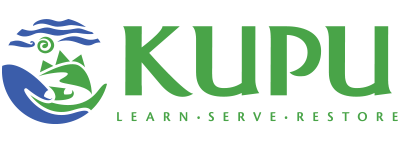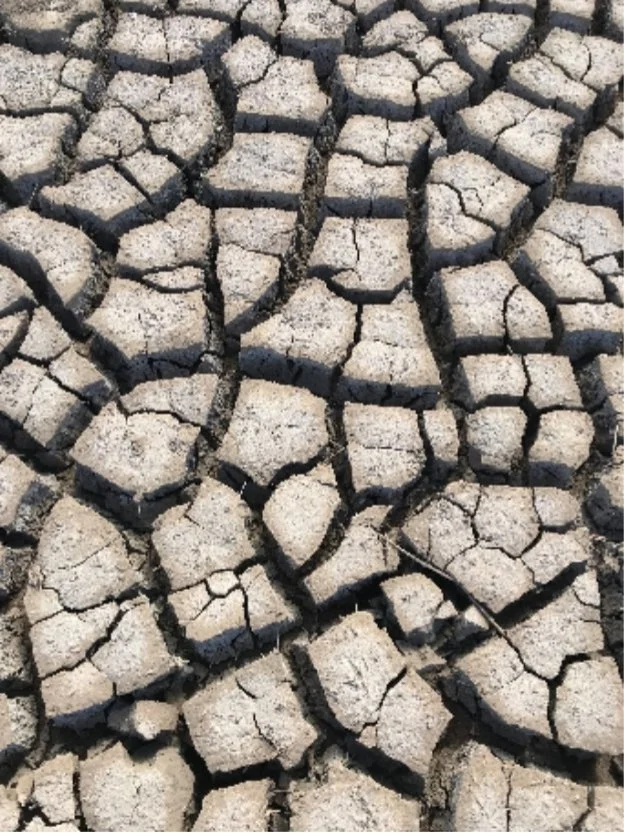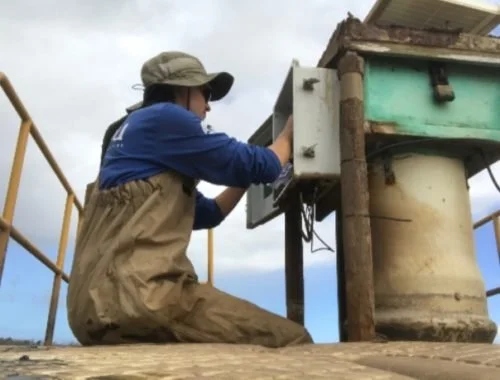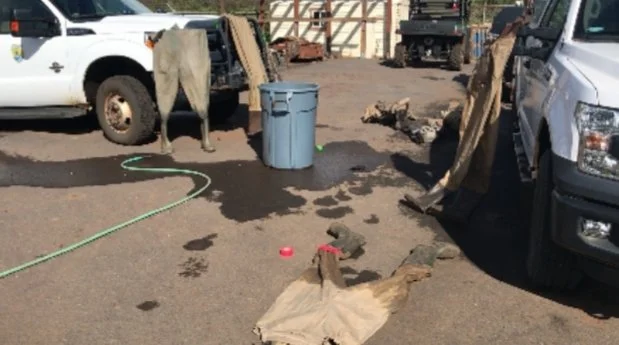My Year of Maui Conservation Serving Keālia Pond National Wildlife Refuge with Kupu
Posted 01/24/22 at 16:37h by Cassie Clark
The name Keālia Pond National Wildlife Refuge is a bit misleading. The 704-acre refuge comprises the largest lowland wetland on Maui, and the third largest in the state of Hawai’i. While the “big pond” retains water year round, the surrounding mudflats and smaller ponds are subject to desertification during the dry season. The beginning of my service term coincided with the last month of the dry season, emphasized by a particularly persistent drought. The mudflats were the primary landscape feature that I saw, and while everyone seemed shocked by how low the water levels were, this was my first introduction to the area, and so it was normal to me.
In the middle of the pond is a hydrological station that takes water data points hourly and this is important, as I quickly learned, because change happens fast around here! To access the data, we have to wade out to the station. The big, fisherman’s waders come on and out we go into the pond.
Figure 2. Downloading data at the hydrological station.
As far out as the station seemed, due to the relatively low slope of the landscape, the water level stayed comfortably around my mid-thigh. Leaky waders are an annoyance at any water level, and after my first trip ended in soggy legs, I tested all of the waders to find which ones needed repairs so future users could remain dry.
Figure 3. How do you test waders to see if they are leaking? Fill up a trash can with water and hop on in!
Next to the hydro station and at several other areas in the ponds are meter markers for water depth. My supervisor, Suzanne, told me how she has been out here in the middle of the wet season when the water threatened to overflow the top of her waders. I could hardly believe it. A change of several feet in water depth? It seemed unlikely, but the winter rains arrived to prove me wrong.
While it rarely rains on the refuge, Keālia Pond is the settling basin for the 55 square miles watershed that extends to the West Maui Mountains. Therefore, as the rain it caught in the mountains, it descends downwards and outwards, eventually reaching the Refuge. On a bone dry day here, I have seen our main stream into the pond flowing at a steady rate. This leads to the rapid water level changes that fill up the pond seemingly overnight, hence the need for the hourly monitoring at the hydro station. Mudflats disappear, vegetation becomes flooded, and water creeps its way into small depressions to create new ponds.
Suddenly, the waterbirds have new habitat and food sources to explore. Birds that had previously been restricted to the main pond now come to the smaller ponds. They sometimes even venture up our access road in the early morning, peeved when the truck comes along and they have to venture back to safer waters.
As the water flow increases, so does the trash that we find on the refuge. No matter where litter is thrown away, it will almost always make its way into a waterway, and continue its travel down through the watershed. The high flow of the biggest stream on site means we see a lot of trash – from old boogie boards to shoes to glass bottles of every shape and size. So this is a great time for a friendly reminder: make sure your trash goes into the proper receptacles, and even if it isn’t yours, picking up a little goes a long way for helping keep our waterways clean!
Figure 4. Some of the trash that gets picked up in the watershed and deposited at the Refuge.
About Kupu
Established in 2007 as a Honolulu-based 501(c)(3) non-profit, Kupu empowers future generations to create a more sustainable, pono Hawai‘i. The organization provides hands-on training programs that educate and mentor youth to become stewards of our culture and environment. Since 2007, Kupu has trained more than 3,500 youth in conservation, sustainability, and environmental education. To date,
Kupu participants have managed 1,300 miles of trail, planted over 80,000 native plants, and have led and/or presented at nearly 1,500 events educating over 61,000 community members and students.




